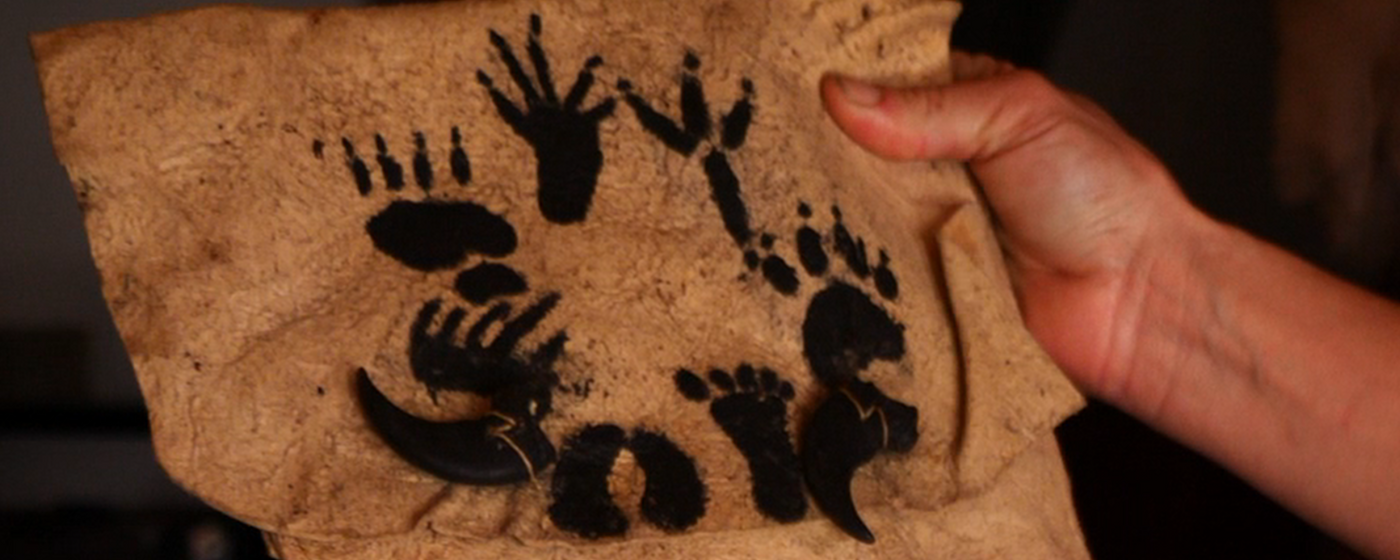My heart thumped with anticipation after Ontario’s Highlands had reached out to see if I was interested in experiencing a Trapping Tour with Sarah Sproule, Indigenous owner of Wayeshkad.
During my three-day all-inclusive stay, I’d learn about sustainable trapping, land management practices, and Indigenous Knowledge, plus tour the trap lines with the Sproules. We’d gather daily to eat breakfast, lunch, and wild game dinners as a family.
I couldn’t have been more excited for the weekend!
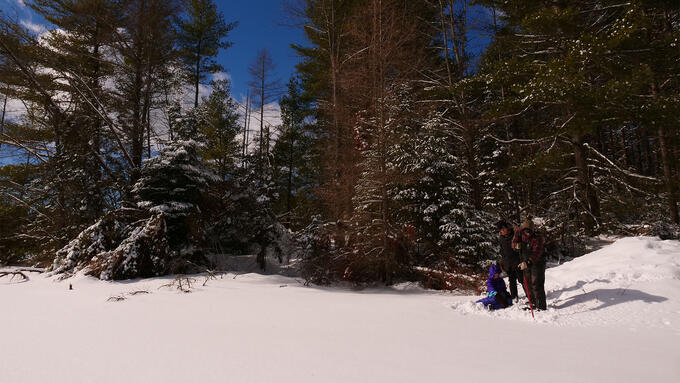
Aaniin, daga biindige! Welcome, please come inside
I met Sarah at her home on a beautiful Friday afternoon. We started by visiting my accommodations down a 500-metre twisty, AWD-required-in-winter laneway to the Lakeside Cabin, perched on a little hill overlooking Hotel Lake. After taking photos and videos of the cute and cozy cabin as the clouds rolled in, then brought all my bags inside.
The backcountry Outpost Bunkie wasn’t ready for guests, so I would spend two nights in the frontcountry Lakeside Cabin. After settling in, admiring all the personal touches in decorating the space, and putting more logs in the wood stove, I rejoined Sarah at the Sproule’s home for dinner.
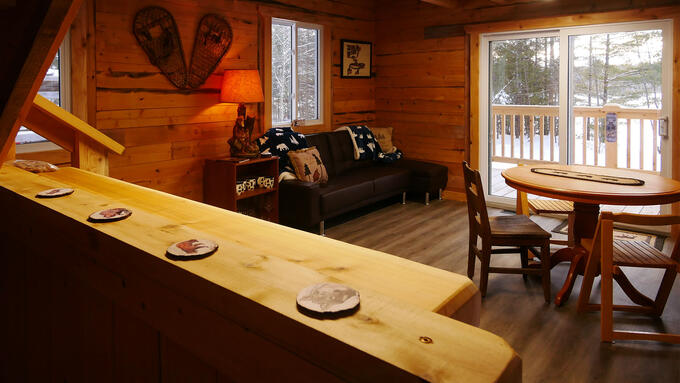
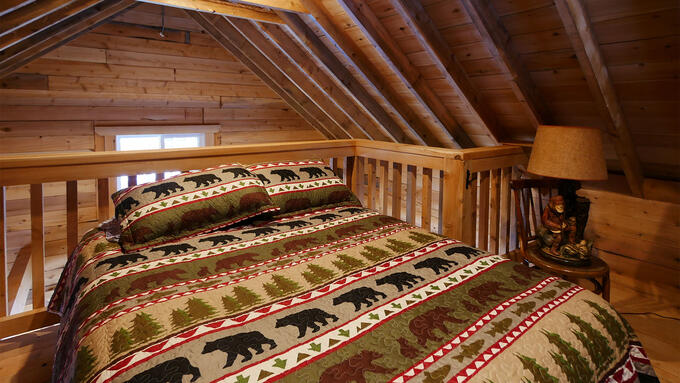
Before entering the house, Sarah and I walked to the chicken coop to collect eggs for breakfast the next day, and I met two of her eight bear dogs. These wiggly hounds wanted attention but really hoped for a frozen egg to munch on, but there was no such luck.
I met two more dogs upon entering the home, Tiger and Makwa, meaning bear in Ojibway. They were eager to demand love from the newcomer - and I was only too happy to oblige.
After the warm and fluffy welcome, Sarah’s son, Quinn, poured me Chaga tea, and we all started chatting. It felt like we were friends who’d been apart for decades, learning about the paths our lives had taken in each other’s absence. Sarah says she wants guests to feel part of the family, and I quickly felt at ease in their home.
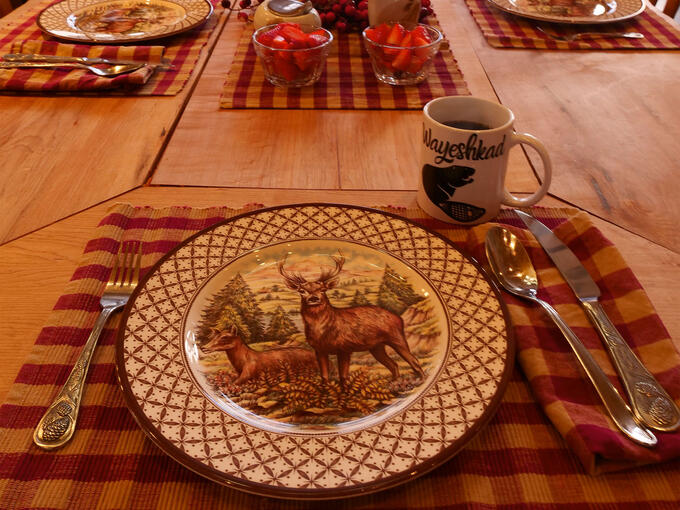
Wild Game Dinner with the Sproules
As Sarah barbequed over coals, Quinn told me he’d harvested the Moose she was preparing for our wild game dinner. The steaks were tender, delicious and smokey flavoured, served with whole roast potato and salad.
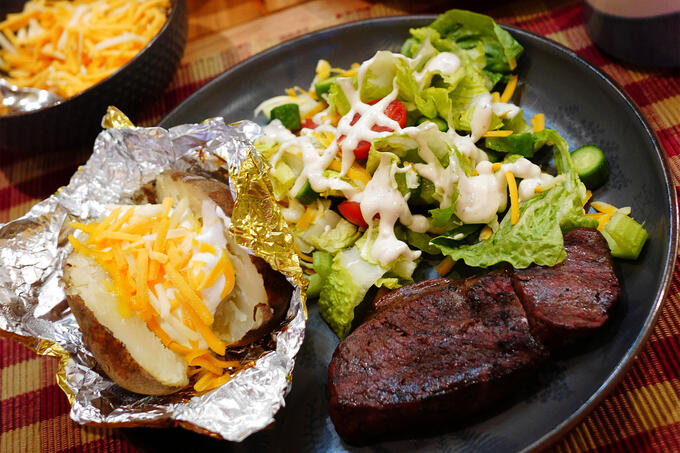
When booking, you can tell Sarah about your food sensitivities and allergies.
After the Trapping Tour on day two, we ate Venison Chili, hot and fresh from the crockpot.
I was stuffed but saved room for dessert - Maple Taffy on snow made from Maple Syrup that Quinn had made last year from sap he’d collected by hand.
Her husband, Nick, and daughter, Aspen, came home after we’d finished eating, but we’d saved them Moose Steaks and two Maple Taffies, much to their delight.
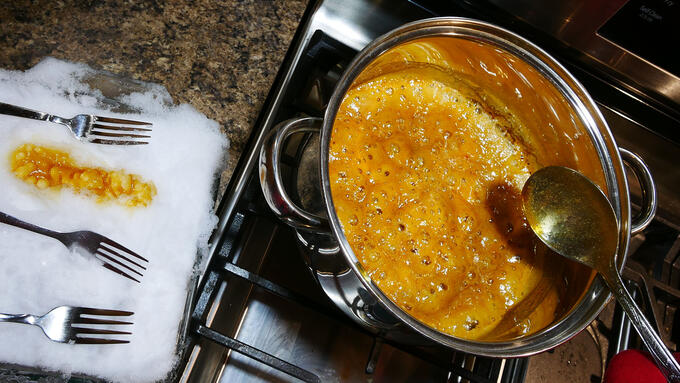
Sarah showed me the sewing workshop and the furs they’d tanned, plus demonstrated skinning a beaver.
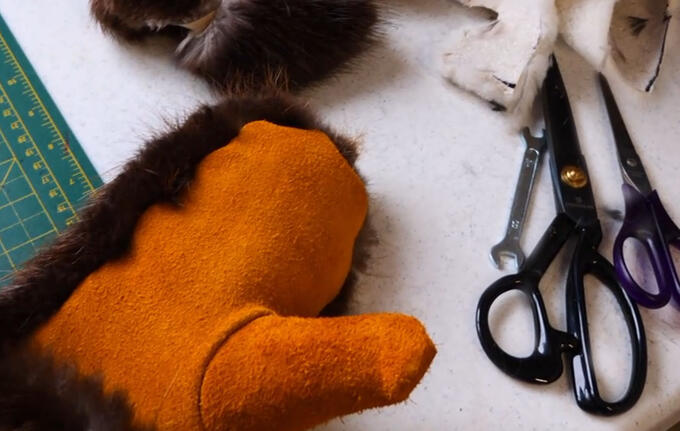
We chatted through the falling darkness. Sarah talked to me about her ancestry, how she learned to trap, how its role is harmonious with healthy land and why she still practices it today.
I had already learned so much from Sarah and her family - this was only day one! I was looking forward to our second day together on the trap line tour.
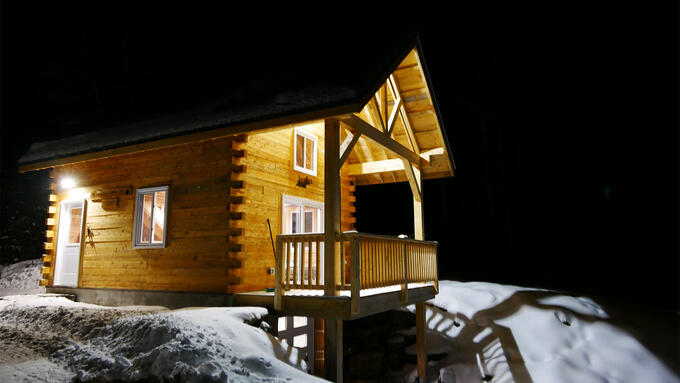
“My name is Sarah. I’m Ojibway, from the Chippewas of Georgina Island.”
For those who fought to have Indigenous Rights to the land recognized and restored, Sarah honours her heritage by teaching her kids and Indigenous youth how to live in balance with nature, as she does in classrooms and on tours.
Knowing how much Traditional Knowledge has been lost, it’s important to Sarah that she passes these skills to the younger generations so that they may teach their children.
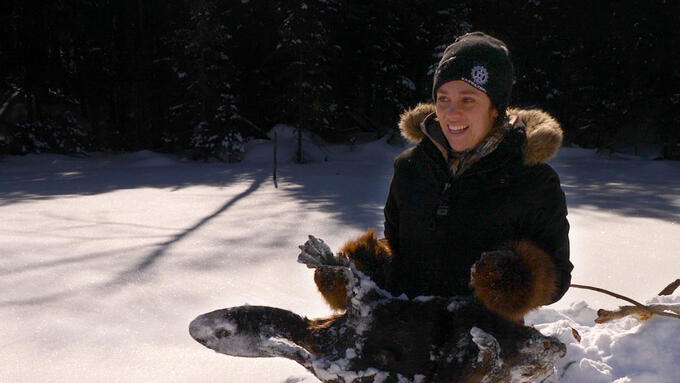
“My grandma is 100% Indigenous and lived on Georgina Island until she was eight years old. I don’t know who taught her, but she taught my dad how to trap, and he taught me. It has always been part of my household. I don’t remember not trapping.”
When her Father first explored the trap lines that Sarah now helps to manage for the Ministry of Natural Resources and Forestry, he found small ponds overpopulated with beaver. It was evident the trap lines went unmaintained for several years.
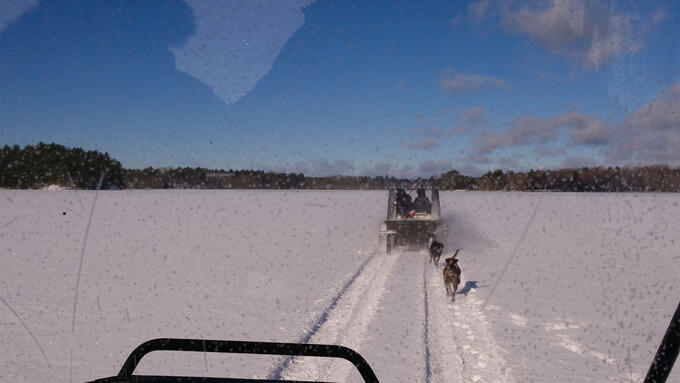
The little ponds had limited trees for the high numbers of beavers to eat, so they had depleted their own food supply. It invariably led to competition, fighting for mates and territory, resulting in sickness and starvation as they all struggled to survive.
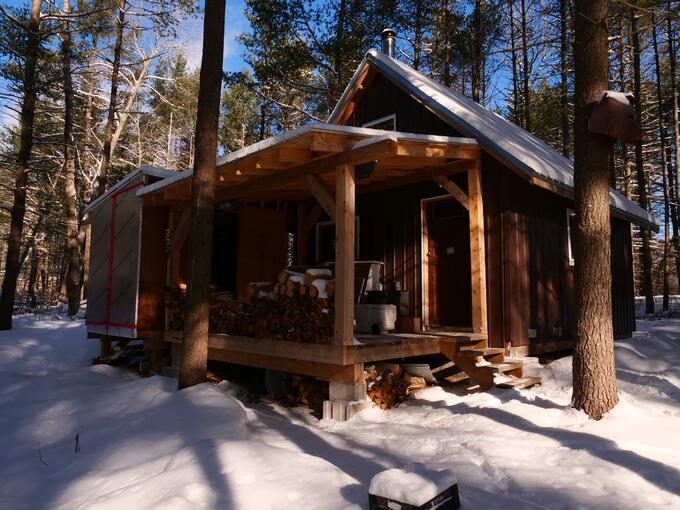
The unhealthy animals her Father trapped indicated the environment was out of balance.
The skinny beavers hadn’t been able to successfully birth kittens (baby beavers) for quite some time. If Nature had been allowed to take its course, these lands might have experienced a complete collapse of the beaver population.
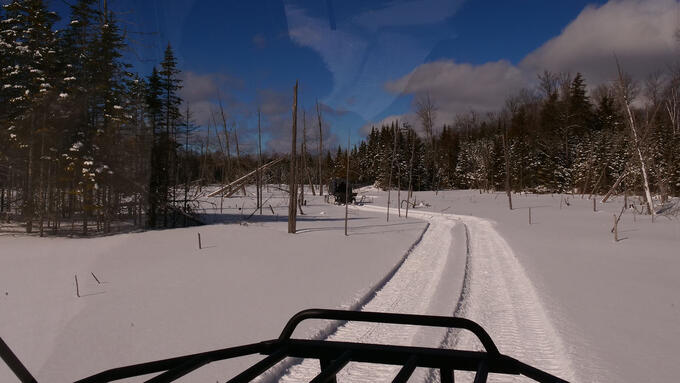
After her father caught the sickly beavers over a few years, the demand for food supplies in the small ponds lessened, and the habitat had a chance for renewal. Then, new beavers moved in and established healthy families.
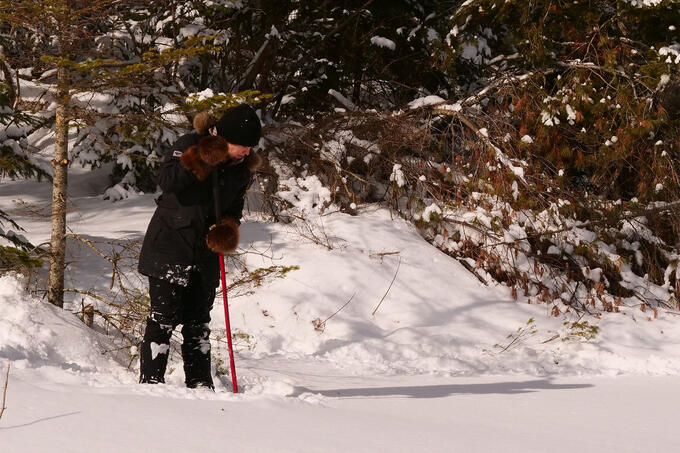
“The ethical guidelines for trapping continue to be modified and changed as more knowledge is gained. The traps that my dad taught me on, that we started with, most of them are not legal anymore."
When people think about trapping, many imagine those grisly steel-tooth traps, which are illegal in Canada. These days, ethical, non-lethal traps are designed not to injure a caught animal, so trappers can let them go.
Lethal traps are tested and rated to ensure that they will quickly release animals from life. These traps could catch non-target animals, but when this happens, Sarah uses them: grateful for the fur and meat.
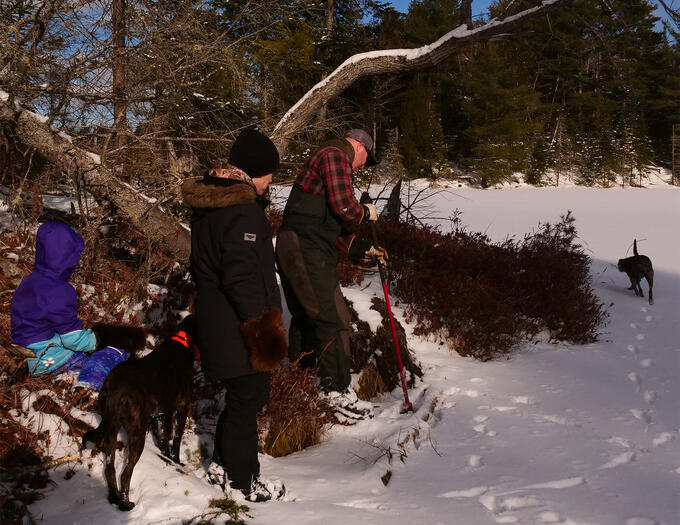
Every part of the animal, big or small, has a purpose, whether feeding the Sproule family and their dogs or freezing for future use as bait. The furs are sold or turned into items like mittens and hats, and the scraps go to making pompoms and fly fishing lures. Even bear claws are used for adorning finished sewn hide and fur pieces.
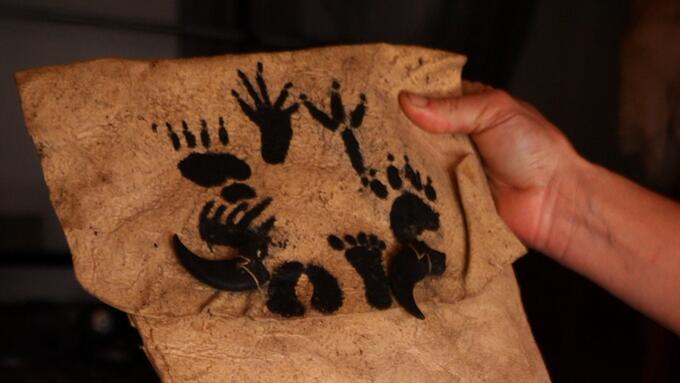
“It’s a 22,000 acre line we manage for the Ministry - provided we continue with the family [trapping] on it, it can stay within our family.”
Day two started with a hearty breakfast of eggs and bacon at the Sproule home, so I had plenty of energy for the morning’s activities, plus the necessary fuel to keep me nice and warm on tour.
We wouldn’t be hiking but traversing across a frozen lake to the ponds with Argos. It was a bumpy ride, but a hoot! Knowing the vehicle floats is well worth being jostled about.
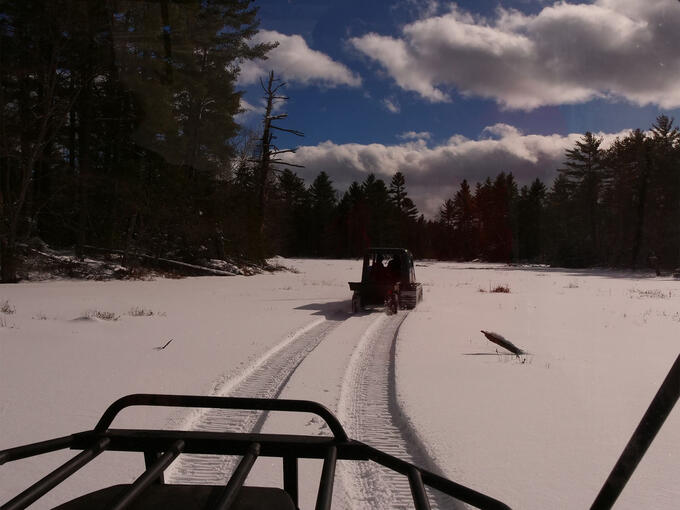
Nick took the lead, driving ahead while we followed behind at a distance when crossing frozen waters, just in case he broke through - which he did twice! Sarah and Nick worked together without pause, winching his Argo out of boggy water and later from a deep stream.
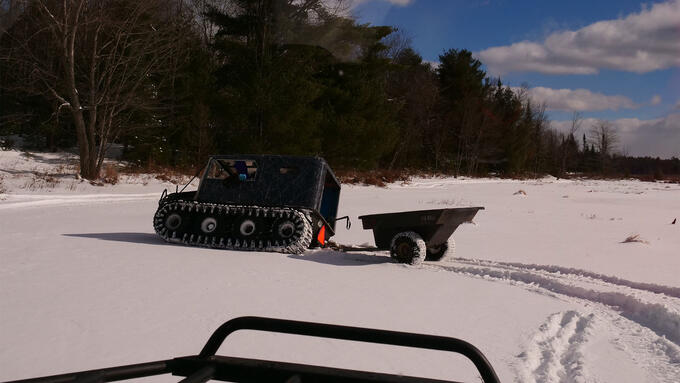
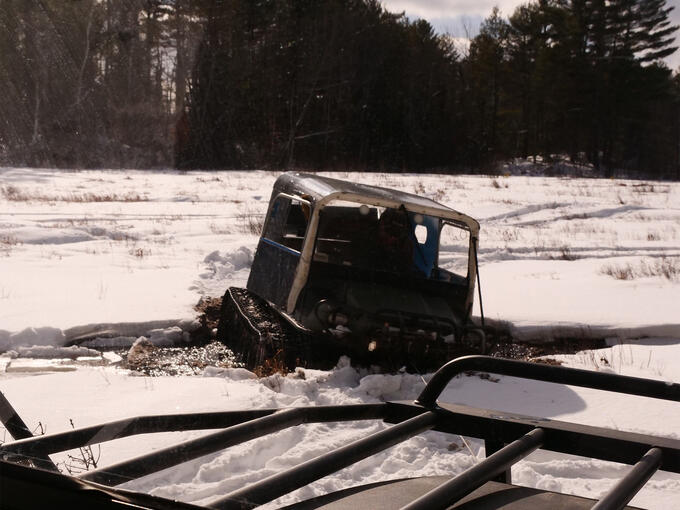
When we stopped at trap sets, Nick was always the first on the ice, finding us the safest walking routes, and we stayed in his footsteps lest a leg punch through the ice, which also happened to Nick.
No snowshoes were needed as there were only a few inches of snow over the hard pack. My day out was less physically demanding than expected as the Argos pulled up within 30 feet of the trap sets, but every tour is different! You might have a longer distance to trek through heavy snow on your trapping date!
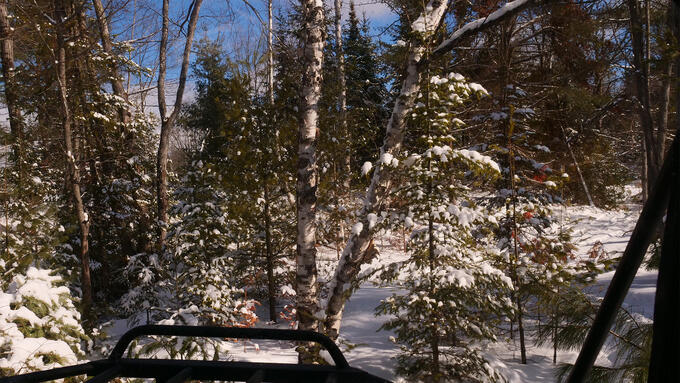
I always felt safe and didn’t wonder even once if we’d be stuck somewhere in the wilderness. Sarah and Nick are ready for almost anything, from having a chainsaw for clearing fallen trees to patching an Argo in the backcountry.
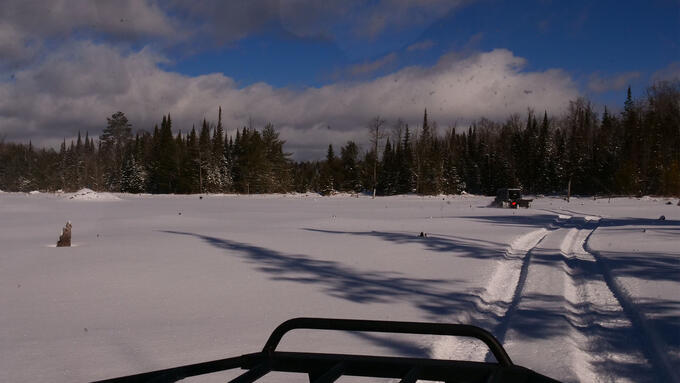
We had a full day; I observed about 17 beaver, 3 otter and 12 fisher/marten traps as they were pulled, checked and packed away. I’m told this was their best day, harvesting 12 beavers, 2 otters, plus a raccoon and red squirrel caught in fisher traps.
Aspen came with us, and just like her brother Quinn (who went on the last tour), she helped, from opening the ice, pulling/releasing traps, and even driving the Argo.
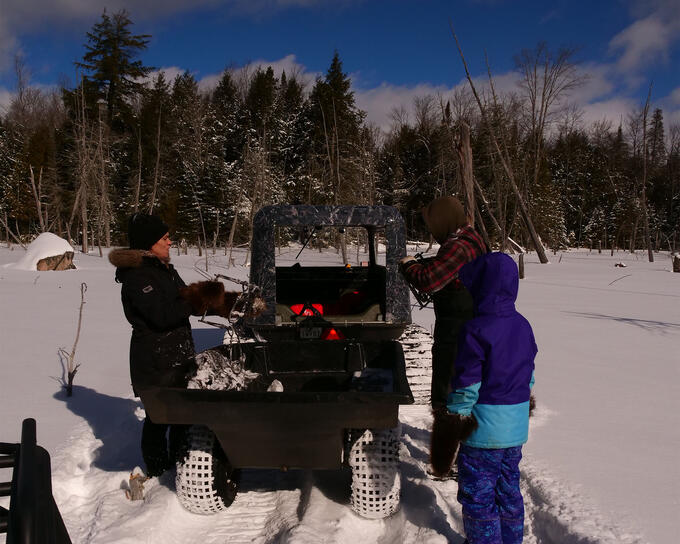
Climbing in and out of the Argos would be difficult for anyone who can't step higher than their knees. You need to step up onto the treads, grab a handhold and awkwardly climb into the 'boat' that makes the vehicle amphibious. It is easier to climb into the back of the Argo, but I wanted the front seat.
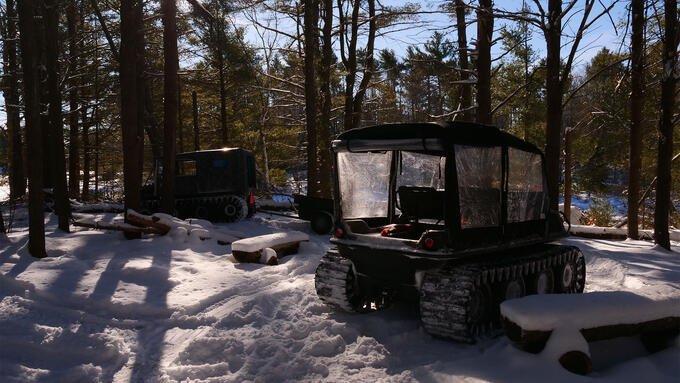
As we toured beaver houses and the traps were pulled, it was evident to even these untrained eyes what hard work has achieved. The beavers were healthy and of different ages; food caches could be seen plainly through the transparent pond surface, and the flow - unstable ice where the beavers swim - was taking a different path than their last tour, evidence that the animals were active.
Deciduous trees were numerous in various states of growth, so the beavers had an abundant food supply. There are now at least one, but no more than two families on each pond. One big house is fondly named the “Beaver Mansion,” as it’s one of the biggest (and healthiest) they’d ever seen.
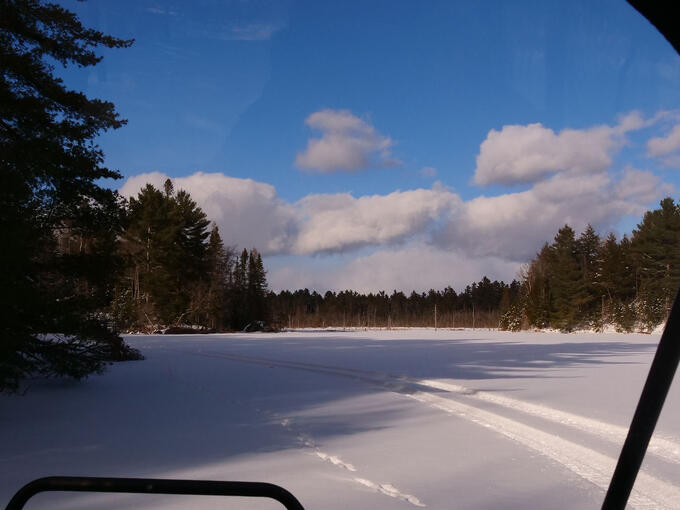
“Come on a tour and understand this way of living, this tradition, our culture, our heritage, and see it in a new light. That is all I ask for.”
Spending all day outdoors, immersed in nature and Indigenous Knowledge shared with me, gave me a new perspective on trapping. It’s easy to understand how Sarah’s journey is rooted in a deep connection with the land; the path forward is clear to her.
I admire and respect Sarah and her family; their ability to sustainably trap, hunt, and forage, plus their knowledge of wilderness survival skills, are inspiring. So many of us couldn’t survive without a farmer’s market or grocery store; these skills are desirable to learn, master and have food security in our own homes.
I got caught up in the family's shared respect for all animals, and their passion for taking care of the land was so easy that I started looking for Trapping Courses nearby once I got home.
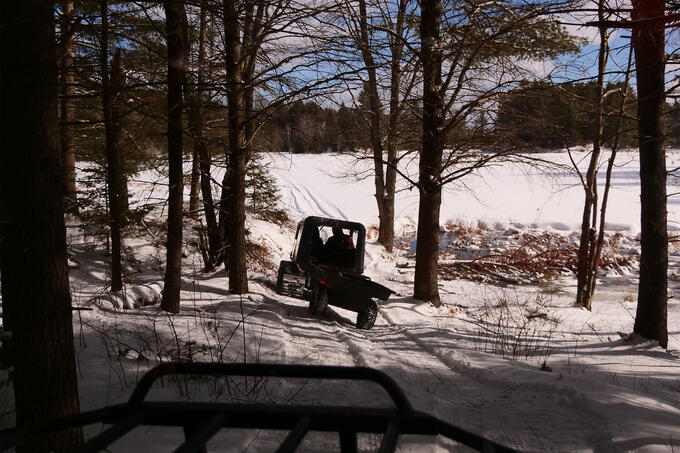
📍 Cloyne, Addington Highlands, Ontario
🌲 Traditional Lands of the Omàmìwininìwag (Algonquin), Anishinabewaki ᐊᓂᔑᓈᐯᐗᑭ, Wendake-Nionwentsïo, and, Mississauga.
Trapping Tour Weekend Itinerary: 2 Days, 3 Nights
Trapping Tour Weekend Itinerary: 2 Days, 3 Nights
4 pm: Check-in and explore the accommodations: Wayeshkad Lakeside Cabin.
5 pm: Join the Sproule family for a wild game dinner (venison, moose or bear) in their home. Depending on the season and harvest, eat wild forage, such as berries and wild leeks.
7 am: Wake up, get set! Gather your gear if you’re sleeping in the Trapline cabin on night two.
8 am: Go to the Sproule home at 8 am for a hearty breakfast of pancakes, eggs and bacon, hot coffee or tea, fruit and yogurt before the tour.
9 am: Follow Sarah and Nick in your vehicle to the access point, about ten minutes from home base, and load the Argos.
10 am: Ride out on the lake, following behind Nick’s Argo to the Outpost Cabin to drop off supplies, snacks, lunch, water and drinks. An outhouse is onsite!
10:30 am: A fire started in the cabin’s wood stove, turning the outpost into a warming station we’ll return to between checking trap sets every few hours.
11 am: Ride with Sarah; learn about land management and how they keep animal populations healthy through ethical trapping methods.
1 pm: Lunch at the Outpost Cabin!
6:30 pm: Back at our vehicles, I exit the Argo for the last time and drive back to homebase.
7 pm: Sarah had made crockpot Venison Chili for my stay, so our Wild Game Meal was hot and ready to eat when we all returned to the Sproule house.
8 am: Make coffee and pack up.
9 am: Return to the Sproule home for breakfast and talk about the tour!
11 am: Time to head home.
11:01 am: Vow to return and stay in the Lakeside Cabin come summertime.
Wayeshkad, Traditional Lands of the Omàmìwininìwag (Algonquin), Anishinabewaki ᐊᓂᔑᓈᐯᐗᑭ, Wendake-Nionwentsïo, and, Mississauga.
